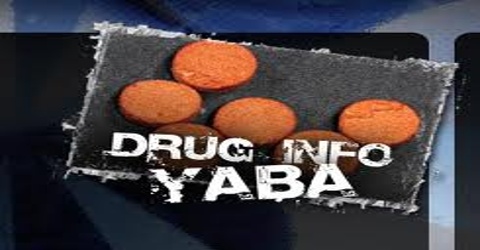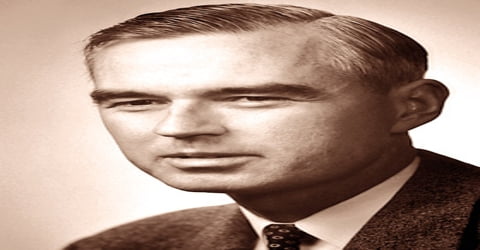Main purpose of this Study is to analysis on Yaba, The Killing Drug for youth. Yaba is a mix of Amphetamine and Caffeine. The idea produces intense hallucination, sleep problems, anxiety, confusion, depression, lean meats and kidney disorders, suicidal traits and death. It doesn’t increase the sexual power though it truly is deliberately implicated with Yaba in promoting its sale. It is when these drugs are taken in inordinately high doses for the sole purpose of ‘feeling good’ that they become harmful.
Introduction
Drugs have come a long way from the “mothers’ little helpers” that the Rolling Stones sang about. These days’ street chemists have waged a war on the senses to try and find the recipe for the ultimate drug. While it would be easy to shrug that off as a problem of the west, the truth is that here in Bangladesh the world of drugs has found a shady little corner. Whether you choose to accept it or not, there is A major drug scene in Bangladesh now, and it’s infecting the minds of today’s youth, the people we like to call our future leaders.
Farah (not her real name) is 18 years old and has been using drugs since the age of 14. Her story like many others started out with Marijuana. It was through the simple use of Marijuana that she opened the doors to a much wider use of drugs. After experimenting with drugs for a bit, she soon realised that she was addicted to heroin. She says it was purely accidental, and soon enough got over the addiction. Farah suffered from severe withdrawal but eventually when she kicked the habit she knew that she could never go back to it. But after hearing about a new drug called Yaba, she decided to try it. She started using it after she entered a circle of friends who were completely immersed into it. In her opinion that is not the only reason she started hard drugs again: “Everybody is doing it because there is nothing better to do in this town”.
The truth is that there are umpteen drugs being used in Bangladesh, Heroin, Cocaine, Ecstasy, Yaba, Phensydil, Crystal Meth, and many more. The problem is that the number of users is rising at a frightening rate. Worse, these drugs have found mass appeal in almost all age groups. From people in their early teens to the fifties, a major portion of society has got aboard the drug train, a train that runs not on oil or coal, but the newest drug in town, Yaba.
Background of the study :
Few days back few young students of private universities from posh areas of Dhaka had been arrested with Yaba. In connection with this more interrogations were made and more persons were arrested including young women.
Networks of Yaba addictions, smuggling and Yaba businesses were detected.
Hundreds of young boys and girls of affluent background are thought to be addicted; they not only use themselves but sell it to others, they use it in groups and also involve in immoral acts. Posh cars and houses are used for carrying out the business and self-destructive habit. A chain of smuggling developed to carry in the drug from Myammer and also from India into Bangladesh and to distribute it to capital and Chittagong mainly.
Lately a businessmen with a strong family connection with big businesses is also arrested. He was caught red handed with huge amount of Yaba and its production equipments.
It is thought that because of the crackdown on Yaba in Thailand where capital punishment had been imposed on the offenders, Yaba use has been diverted to Bangladesh by the International criminals from late nineties to till now.
Yaba is a combination of Amphetamine and Caffeine. It produces intense hallucination, insomnia, anxiety, confusion, depression, liver and kidney disorders, suicidal tendencies and death. It does not increase the sexual power though it is deliberately implicated withYaba to promote its sale.
Extent of use of Yaba is alarming in Bangladesh. Why we had to take so many years to identify it? It was gross failure on our law enforcing agencies. It is also a failure on the part of our parents whose children are affected and our society in general and remain ignorant of the menace which is destroying our young minds and crippling our society.
Nevertheless, the effort RAB (Rapid Action Battalion), our special force to combat terrorism has given to arrest the culprit is praiseworthy. We hope that the major offenders will be given exemplary punishment.
Health problem in bangladesh
In Bangladesh, over the past decade there has been a significant decline in infant and child mortality. Control and prevention of diseases, such as measles, poliomyelitis, and diphtheria along with widespread use of ORS for diarrheal diseases have greatly reduced childhood mortality and morbidity. Bangladesh is on the verge of Polio eradication, and has already achieved the elimination goal for leprosy at the national level. People are living longer; the average life expectancy at birth in Bangladesh had increased to over 60 years in 2000. Population continues, however, to grow at about 1.4 percent and TFR has remained around 3.3 for the last several years. The maternal death ratio is still high at over 300 per 100,000 live births.
While there has been substantial progress in disease prevention and control and a decline in childhood communicable diseases, new and old infectious diseases, such as malaria, tuberculosis and acquired immunodeficiency syndrome (AIDS) are important threats to health for the years ahead. Projections are uncertain because of the potential of travel and trade, urbanisation, migration and microbial evolution to amplify these diseases. The emergence of drug resistant malaria and tuberculosis further increases the risk.
Non-communicable diseases are a heterogeneous group that includes major causes of death, such as heart diseases, diabetes and cancer, and disability, such as mental disorders. These are also on the rise in Bangladesh.
Malnutrition is a major cause of death and debility in children in Bangladesh. Micro-nutrient deficiency is quite common; nearly 75 per cent of children’s life is spent in illness mostly due to malnutrition related debility and infections. Poor nutrition deters physical, cognitive and mental development. Low birth weight and malnourished children are susceptible to infections; roughly two-thirds of under-five deaths are attributed to malnutrition, 75 per cent of it being associated with mild and moderate malnutrition. About 25 per cent of maternal deaths are associated with anemia and haemorrhage. Women and adolescent girls mostly suffer from Anemia owing to iron deficiency.
History
Yaba is said to have been originally used by Hitler who gave it to his soldiers to combat against fatigue, heighten endurance and elevate the mood. This Nazi lineage has given the drug street credibility like nothing before it. While most of the ingredients to make it can be purchased legally, and produced within a couple of hours in a casserole dish, there are no such known drug labs in Bangladesh. Yaba is a mixture of methamphetamine, caffeine and at times heroin. Some people claim it is the ultimate upper, the inevitable crash after the high is the darkest side of the drug. It had been linked to lung and kidney disorders, hallucinations, increased and irregular heartbeat along with a host of other psychological effects. Users of Yaba run the risk of rapid heart rate, increased blood pressure and damage to the small vessels in the brain that can lead to a stroke. Chronic use of the drug can result in inflammation of the heart lining. Overdoses can cause hyperthermia (elevated body temperature), convulsions, and death. Yaba users also may have episodes of violent behaviour, paranoia, anxiety, confusion and insomnia. Those coming off the drug are also susceptible to severe depression and suicidal urges. It is basically a non-stop adrenaline rush, followed by exactly the opposite feeling.
The route to Bangladesh is fairly simple; the little pink pills are produced in Burma and smuggled into Bangladesh mainly through Teknaf. The Burma news agency claims that when the drug crosses the border it is sold at approximately Tk 13 per pill. By the time the pills reach Dhaka and have gone through various middle men, they are sold for between Tk 50 and Tk 60. The real money is made when the dealers in Dhaka get a hold of it, they mark it up almost 500% and the average pill sells for between Tk 350 and Tk 400.
There are varying degrees of good pills and bad pills. The Chita, for instance, is considered the lower grade of Yaba, it is distinguished by small marks on the pill. Then there is the Golap Jol or Rose Water family of pills which are generally considered the highest grade of Yaba. While the Chita gives the user a relatively smaller buzz, the Golap Jol” gives a pure rush, something like a burst of adrenaline. The pills themselves also come under much scrutiny, they have the letters WY inscribed on them, when the Y is elongated and the colour of the pill is pure pink then it is apparently good Yaba. The information regarding this one drug is immense and what is even cts under treatment are termed as ‘recovering patients’ all throughout their lives. ch is absolutely necessary. They would give Anusheh lots of pills and more medicine to get over her depression and drug problem.” According to both Lubna and Islam, recovering patients are not supposed to be given even sleeping pills. “In fact, anything that can be a cause for addiction is avoided,” explains Islam. “In many cases even gambling is strictly forbidden. The point here is to make sure that the recovering patients do not get into any kind of addiction whatsoever, since there is a chance for the original addiction to take over the patient.” Not all families prefer to come out into the open, so Islam had figured that a phone network would also work well. That was when he approached one of the leading telecom companies in the country, Grameen Phone, and asked them to provide with phone hotlines, where concerned parents could call and talk about the problems. “Families start to disintegrate once children start going through drug problems,” says Islam. Parents of addicted children call the hotline numbers 24 hours a day and talk about the problems that they face at home. They have even started to meet at least once a month to discuss about their problems and look for alternative ways of solving their problems. “Most of the callers always turn out to be mothers,” explains Lubna, who along with Islam counsels through one of the hotline numbers. “Mothers are the target in most cases,” she smiles. “They get the blame from their families, husbands even their children sometimes for the drug problems that the child is going through. Many a time I have had mothers crying on the phone for help since her child won’t listen to her. That’s when I get Anushe to help me out. It is natural for a recovering patient to relate to another recovering patient.”
Route of Yaba and Types :
The route to Bangladesh is fairly simple; the little pink pills are produced in Burma and smuggled into Bangladesh mainly through Teknaf. The Burma news agency claims that when the drug crosses the border it is sold at approximately Tk 13 per pill. By the time the pills reach Dhaka and have gone through various middle men, they are sold for between Tk 50 and Tk 60. The real money is made when the dealers in Dhaka get a hold of it, they mark it up almost 500% and the average pill sells for between Tk 350 and Tk 400.
There are varying degrees of good pills and bad pills. The Chita, for instance, is considered the lower grade of Yaba, it is distinguished by small marks on the pill. Then there is the Golap Jol or Rose Water family of pills which are generally considered the highest grade of Yaba. While the Chita gives the user a relatively smaller buzz, the Golap Jol” gives a pure rush, something like a burst of adrenaline. The pills themselves also come under much scrutiny, they have the letters WY inscribed on them, when the Y is elongated and the colour of the pill is pure pink then it is apparently good Yaba. The information regarding this one drug is immense and what is even more startling is that a pair of 18-year-olds provided us with all the above-mentioned information.
Phensidyl or “Dail” as it is known, is also a major player in the Bangladeshi drug scene. It is essentially a cough syrup, which acts like a downer and makes the user drowsy, a much lighter feeling than Smack. It was soon banned in the country, and even after numerous busts into the Phensidyl world it can still be found and is still widely sought after. Since Phensidyl became hard to come by, people changed to its substitutes which are Tixi and Dexpoten, both cough syrups. They were both sold as over-the-counter medicines, yet Tixi soon became infamous as the new and “legal” Phensidyl and was taken off the market. Nowadays it is Dexpoten, a regular syrup to cure dry cough and nasal congestion and can be bought for Tk 50 a bottle, is used as the poor man’s substitute to Phensidyl. The label on the syrup contains the specific dosage, the uses and warnings about possible drowsiness. An official of the pharmaceutical that makes the syrup say that the government-approved narcotic that is used according to allowed levels, is present in many other medicines. It is when these drugs are taken in inordinately high doses for the sole purpose of ‘feeling good’ that they become harmful.
Case Study -1
Johnny (not his real name) is a 19-year-old boy who started using Yaba just for fun. His first exposure to drugs was through Marijuana, he started at the age of 15 and got addicted to it by the age of 17. He says that when he first started Yaba it was not that well known, and it was brought into the county by the children of the powerful and influential. “It (Yaba) exploded in late 2004 and now it is like Ganja, everyone has it, its quite normal now”, he says. Johnny tells us a story when, at a party in October last year, a Yaba dealer came and sold a few pills to two or three people and without much fuss left. He goes on to say that in June this year at a party with almost the same people a Yaba dealer showed up, only this time everyone went and bought a few pills from him. “The change has been dramatic, as soon as it was widely available even though it was still pretty expensive everyone started using it, from 12-year-old girls to 50-year-old men”. When he was completely hooked on the drug he spent in excess of Tk 12,000 a week on it. The sensations he related to the drug were those of paranoia, insecurity and hyper behaviour in general. Yet even after the inevitable depression after the upper wears off was not enough to keep him away from it, it only spurred him on to keep the buzz as long as his money could hold out.
While Yaba may be all the rage now, it still competes with Heroin as the most consumed drug in Bangladesh. Heroin has found a niche in the Bangladeshi drug culture; it is relatively cheap and is widely available. Yaba may be the drug of choice for a higher income bracket but Heroin has always had a steady customer base, from the desperately poor to the rich. Most of the Heroin available here is actually Heroin “dust”, not the real deal. As usual we can blame Burma as one of the prime sources of supply, but the main problem is the fact that there is a high demand from our local markets. Heroin is also smuggled in from our Indian borders and that Heroin usually comes from the poppy fields of Pakistan and Afghanistan.
Case Study – 2
Rony (not his real name) is a 21-year-old boy who took the time to talk to us about his Heroin addiction. He says the root of all drugs lies in the taking up of cigarettes. From there the natural step is to try Marijuana and so on. That is how he started, from Marijuana he first tried Phensidyl, he soon got addicted to downers and soon Phensidyl was not hard enough as a downer. He elevated it next to Heroin, the almost hypnotic effect of Heroin had him from the first time he tried it. The following three years were the worst in his life, “There were times when I would spend Tk 2000 a day on the double downers of Phensidyl and Smack (Heroin), and even after that I was not satisfied,” He said. “I was so into the “pinik” (feeling) it gave, we even started having Yaba and Heroin together, one upper and one downer, it was the ultimate speedball effect”. It started affecting his health quite badly, on top of which, he also started Crystal Meth or “Ice” as its known. He tried to quit it a few times but could never quite make it, “The first 72 hours are the toughest, once you can make it past that, you are set,” he said. But he could never gather the will power to leave. He says the friends he was hanging out with then were probably the biggest reason he failed to quit. “If everybody is having it, you just have to as well”. He finally had enough when the depression and anger had become too much, he wanted to quit but needed help. “My family supported me through thick and thin, without them I could never have quit, support is what one needs to overcome the lure of Heroin” he told us. This story represents both the best and worst that drugs can offer but how can the problem be tackled?
Some Drugs points of the City :
Chasing- The process of inhaling the smoke from Yaba pills
Drug hot spots are scattered around the city. Kamlapur Titi Para is owned by a man named Nasir and it is known as “Phensidyl bazar”. It has become a rather infamous place where people are always looking for their next hit. Another similar area is Doyaganj where Phensidyl is supposedly sold quite openly. Although the supply of the drug has become scarce these two areas are never short of paying customers. Heroin or Smack as its known has some well known spots, City Polli in Syedabad and the very well known BNP bazaar in Agargaon . Other places such as Kataban, Hazaribag and Nawabganj are lesser known but still well frequented by those in need of a hit. What is interesting is that while people buy these substances quite openly the government and the police still have not been proactive enough to smoke out the dealers from these areas. The addiction rates are rapidly increasing, yet no one has gone to pull the problem out from the roots – the dealers and the smugglers.
Drugs and Music : Relation and correlation
Drugs and Rock n Roll have always been linked since the Hippie Movement of the 70s. Even now the general assumption is that drugs are part and parcel of a musician’s lifestyle. According to the band legend Maqsoodul Haque, most creative artists do indulge in one or other form of ‘narcotic’ drugs. “However,” he adds. “We artists are criminalised as ‘drug addicts’ simply because we are the ones provoking society into this debate, which our self appointed ‘conscience of the nation’ are not willing to participate in, or even acknowledge the most basic understanding about what is, and what is not drug, what is and what is not abuse.”
Also popular for his outspoken nature and opinions, which are sometimes considered controversial, Maqsood talks about drugs as a support for genius creativity. “If used ‘intelligently’,” he says, “Drugs do and can help ‘creativity’. However, ‘creativity’ is a relative term. A singer like me can’t simply jump on stage and blow everybody’s mind apart just by using drugs. It is not like a performance enhancing drugs either that athletes consume. Drugs won’t make you any smarter, cooler or more intelligent than you already are. Creativity can only be attained through hard work alone. There are no short cuts to success and certainly no alternative to hard work. Consuming Having experienced the many effects of drugs, he says that no matter how good it feels inside, there is always the downslide when the effect wears off. “The drugs that I have personally used are Alcohol and Marijuana and both are ‘pleasant and (makes me) very, very happy’ for a certain period of time,” he says. “However, the slide down is horrible. The next morning you wake up feeling you should never have been born! The down side to all narcotics when abused is it causes depression that leads to mental disorders, psychosis and even schizophrenia.”
A prominent figure in the music scene today, Buno, the bassist and composer of the famous band Bangla, says that certain drugs make one feel very active and restless for a certain period of time. “Those under the influence of drugs which fall under the category of ‘uppers’, like Crack, Cocaine, Ecstasy and Yaba, tend to feel very jittery most of the time,” he explains. “They will automatically want to keep busy physically, for instance toying around with something in their hands, moving around too much or simply keeping both the mind and the body preoccupied with something or the other. Since the drug user has the constant urge to do something and stay active, one may feel that he or she has successfully done a lot and feels satisfied in a strange way.”
This is seen mostly amongst students studying for an exam or musicians creating music or getting ready for a show. Many a student and musician claim that this has actually helped them to concentrate and focus on whatever they are doing or trying to produce and create. “It is really sad that we artistes tend to think that getting high would actually help us to create better,” he says. “I myself used to be a small-time junkie once upon a time and created music under the influence of certain drugs. Recently, I dug out the tapes that had some of the home recordings of my ‘junkie’ days and music that I played, and I am so glad that nobody ever had the chance to actually listen to them!
Buno adds that there are some who take these ‘uppers’ merely for harmless fun amongst friends. Once one develops an idea of having these pills or sniffing the powder at home and not sharing with friends, that is when the drugs start to take control of the body. “You start depending on it to make you happy or fill in the gap to feel self-satisfied,” he says. “That is when addiction starts to take place.” There are some youngsters today who feel the need to get addicted as a result of peer pressure and also stand out in the crowd in a subtle way. “There is no way that drugs can boost your image,” smiles Buno with finality.
Shaju, the drummer of the famous band Artcell, who has made a name for himself with his versatile double bass drum work, says that drug addiction can never stand as a fashion statement for a musician or anyone for that matter. “It is only for those who need to face reality in all its brutality but don’t have the courage to,” he says. “As a musician, I know that one definitely does not need drugs to enjoy music. Although I am not into drugs myself, I do have friends in the circle who take the stuff for many different reasons. I have seen people losing control over themselves and that in no way can be the ideal situation for any musician to create music or to perform. If I can’t think clearly or remember my parts, there is a chance that I might mess up my performance and it’s the same for all my fellow band mates. I would also like to appreciate certain people who recognised this problem within and strove to recover. It takes more strength to come out of a drug problem and start all over again.”
Case Study -3
Shahidul Islam was devastated when both his sons had to be sent off to rehabilitation centres in Mumbai after being diagnosed with drug problems. For the past few years, he has read up on the subject and talked to a lot of people and found out that he was not the only one with this problem. “There are many families in the city who are in denial or assume that their addicted children will be ok once they let go of the substance. This is not right.” He says. “We need to know what’s going on with our children and also need to talk about it.” That’s when Islam founded Solace, a network for parents of children with drug problems. The network is now overseen by both Islam and Lubna.
Case Study -4
Lubna explains that all addicts under treatment are termed as ‘recovering patients’ all throughout their lives. “Theoretically, there is no such thing as a fully recovered patient,” she says. “Even if a patient stays away from drugs for a couple of years or more there is always a chance to slip up, which also happens to be a part of the whole recovering process.” Mother of the famous singer Anusheh Anadil of the band Bangla and also a recovering patient, Lubna has been dealing with these problems first hand for years. “I had sent my child from one psychiatrist to another in Dhaka,” she says. “However, none of them had special training on rehabilitation which is absolutely necessary. They would give Anusheh lots of pills and more medicine to get over her depression and drug problem.” According to both Lubna and Islam, recovering patients are not supposed to be given even sleeping pills. “In fact, anything that can be a cause for addiction is avoided,” explains Islam. “In many cases even gambling is strictly forbidden. The point here is to make sure that the recovering patients do not get into any kind of addiction whatsoever, since there is a chance for the original addiction to take over the patient.” Not all families prefer to come out into the open, so Islam had figured that a phone network would also work well. That was when he approached one of the leading telecom companies in the country, Grameen Phone, and asked them to provide with phone hotlines, where concerned parents could call and talk about the problems. “Families start to disintegrate once children start going through drug problems,” says Islam. Parents of addicted children call the hotline numbers 24 hours a day and talk about the problems that they face at home. They have even started to meet at least once a month to discuss about their problems and look for alternative ways of solving their problems. “Most of the callers always turn out to be mothers,” explains Lubna, who along with Islam counsels through one of the hotline numbers. “Mothers are the target in most cases,” she smiles. “They get the blame from their families, husbands even their children sometimes for the drug problems that the child is going through. Many a time I have had mothers crying on the phone for help since her child won’t listen to her. That’s when I get Anushe to help me out. It is natural for a recovering patient to relate to another recovering patient.”
Findings
The crackdown on Yaba peddlers by Rab has exposed the magnitude of the problem of drug use among the affluent youths in the city. Kudos to the Rab team. The details pouring in are mind-boggling, to say the least. Moral degeneration has reached an abysmal state, without our even knowing what has been going on. The situation has turned critical, as addiction looks like threatening a whole generation of youths.
The law enforcers’ action has apparently forced the drug peddlers to change their modus operandi, and they are now recruiting new operatives to keep the business alive. Obviously, the supply lines have to be cut off to ensure that the deadly drugs don’t reach any customer. The illegal business has grown big and the law enforcers will have to make some determined efforts to contain it.
There is more worrying news. So far, the general impression was that Bangladesh was being used as a transit route by the drug smugglers. But it is now clear that the number of local users has increased manifold. Worse still, drugs like Yaba are being produced locally! That’s also an indication that a huge number of youths have become regular customers of such intoxicants.
The question might now arise what the narcotics department had been doing while the drug business thrived. Evidently, the surveillance on production, supply or marketing of such drugs was poor, if at all there was anybody to bother about the ominous proliferation of the drug. Another point that seems to be rather baffling is that the Yaba trade was being conducted by youths from rich and socially well-placed families. Were they powerful enough to neutralise the enforcement of law? What else can we surmise from the way the Yaba trade was going on?
Whatever might be the reason behind the malignant growth of drug trade and abuse, it has to be stopped in order to save our youths from self-destruction. The law enforcers have already arrested a number of suspected drug peddlers. And we expect that soon they will be able to identify and catch the godfathers who might have been controlling the business from behind the scene. Drug abuse has to be prevented at any cost, if we don’t want to find ourselves ensnared with a social menace of the most unmanageable type.
Problem identification :
All this leaves us with a host of questions, why is that the spread and usage of drugs has become so rampant? What is the government doing about border security from where most of the drugs come in? Who is to blame? These are just thoughts we would not like to express. It is easy to suppress what society is not comfortable talking about, and in this case most of the society we know has a lot to hide. Drugs are no longer restricted to adolescents, many middle-aged women take Yaba as a diet pill, and for men above 40, cocaine and Yaba are quite common. As Farah said, “If people of all ages are having it, who is going to stop you?
Conclusion :
Parents teacher and the civil society members also should not avoid their responsibility for starting a social movement to raise peoples’ awareness against drug addiction, Pressure should also be created on the government to improve the logistics when the alders want to return to normal life. otherwise we will have a generation yielded to Yaba.
















